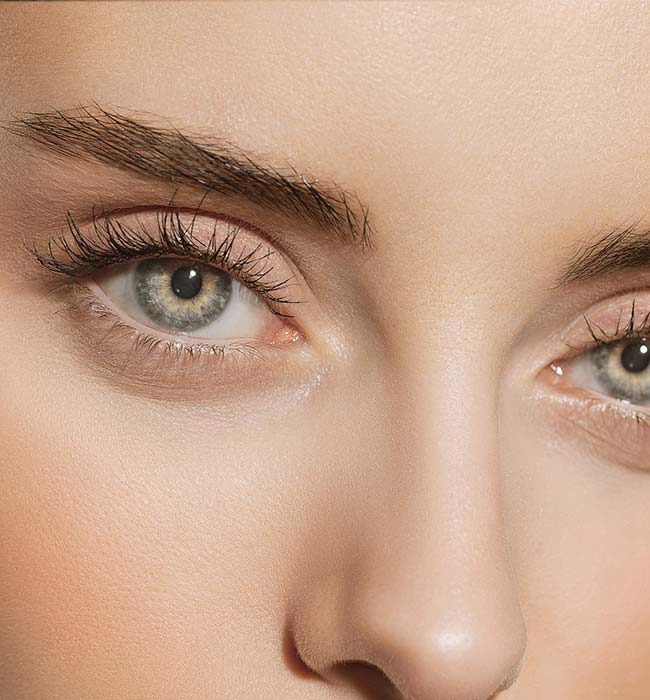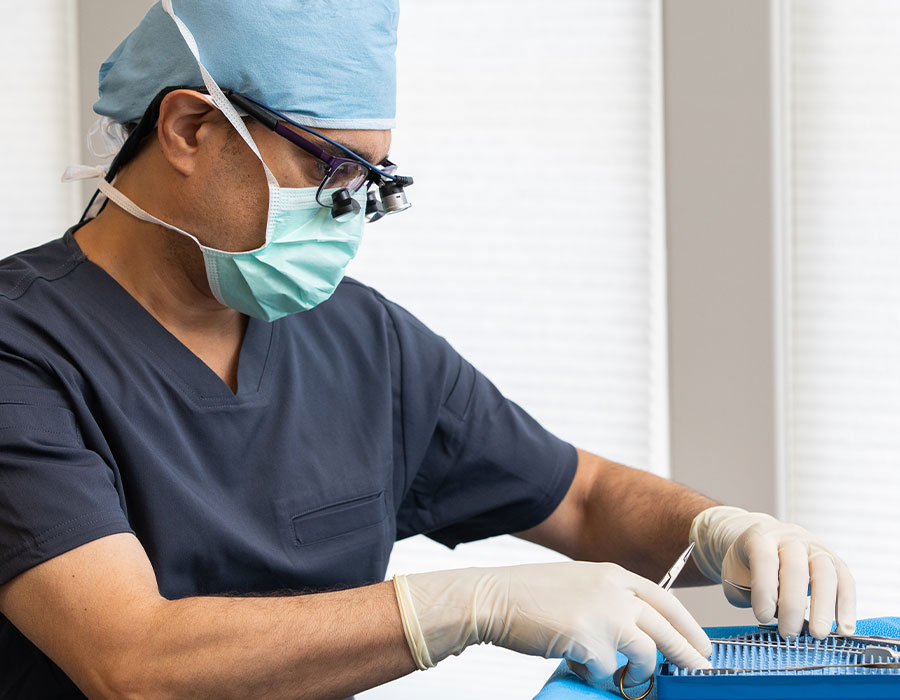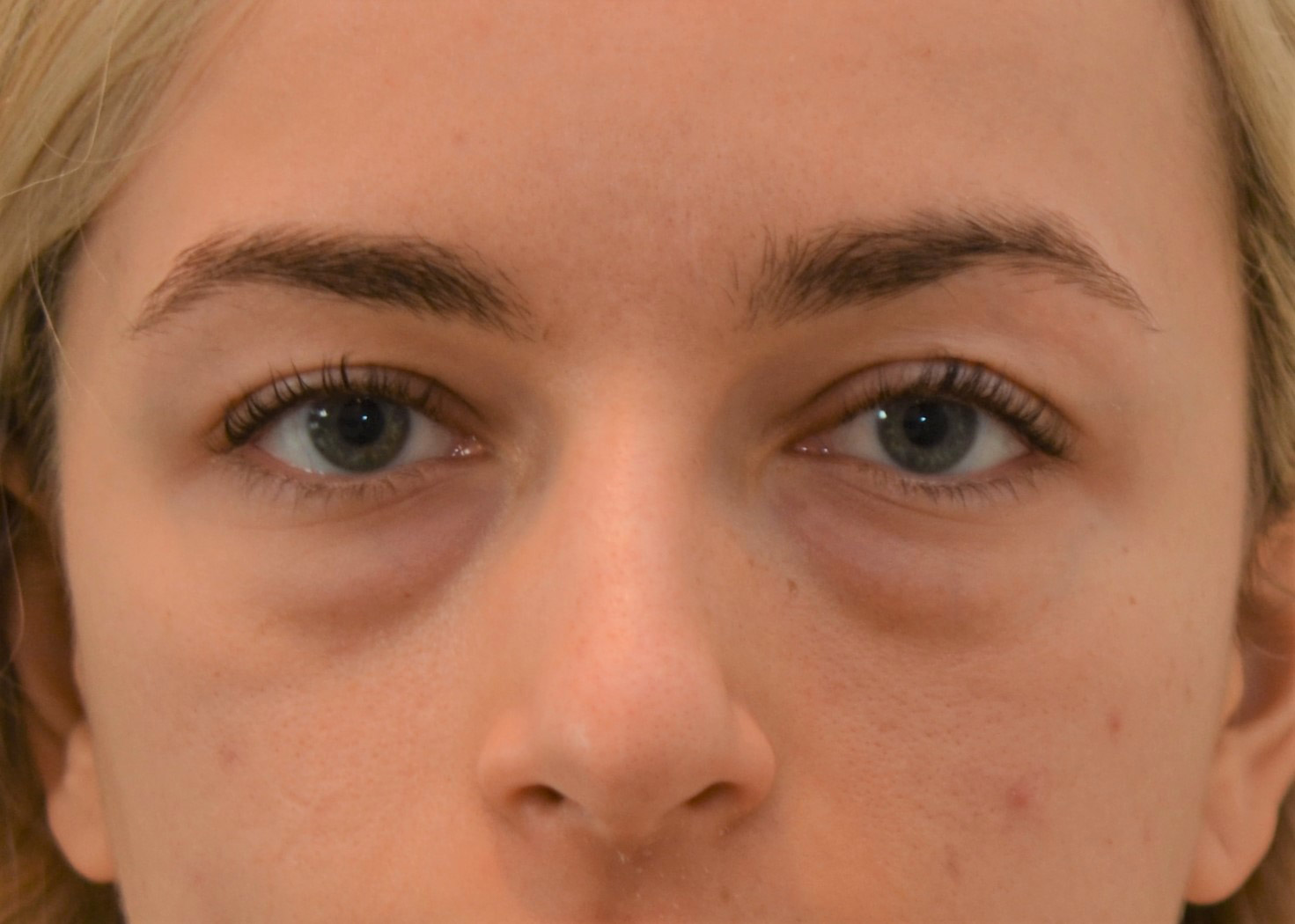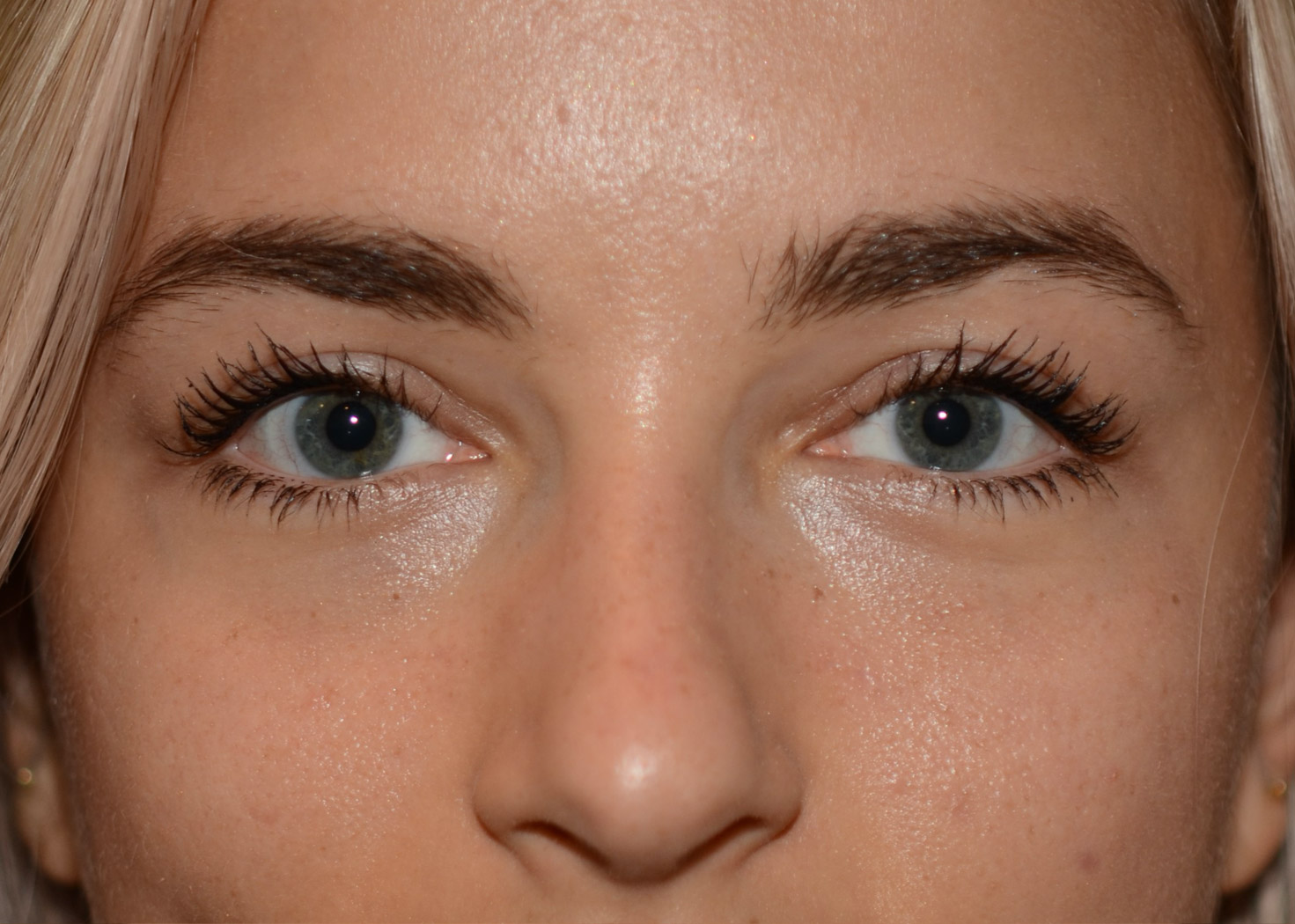Blepharoplasty (Eyelid Lift)
Blepharoplasty procedure can give the eyes a a more rested or rejuvenated look by removing excess skin, and re-positioning bulging fat or lax muscle from the upper or lower eyelids.

Blepharoplasty procedure can give the eyes a a more rested or rejuvenated look by removing excess skin, and re-positioning bulging fat or lax muscle from the upper or lower eyelids.


If you suffer from loose, baggy upper eyelids or undereye bags that make you look older and more tired than you feel, blepharoplasty might be a procedure that could benefit you. As we age, eyelid skin naturally becomes thinner and redundant; this excess skin is medically termed “dermatochalasis.” A blepharoplasty procedure can make the eyes look more rested and rejuvenated by removing excess skin and repositioning bulging fat or lax muscle from the upper or lower eyelids. Blepharoplasty, pronounced “blef-a-ro-plasty,” is the most commonly performed facial cosmetic procedure in both men and women.
Blepharoplasty is an umbrella term for surgery concerning the eyelids. Generally speaking, upper blepharoplasty is a surgical procedure in which excess skin is removed from the upper eyelid; lower blepharoplasty is a surgical procedure that targets the lower eyelid and under-eye area to reduce bagginess.
The main component of upper blepharoplasty is removal of excess skin, a condition named dermatochalasis. This will decrease “hooding” of the eye and present more eyelid platform, which women often appreciate as it facilitates the application of eyelid makeup.
During upper blepharoplasty, the excess skin on the upper eyelid is removed through an incision hidden in the natural eyelid crease, rendering the resultant scar virtually invisible. In years past, upper eyelid fat and muscle were often removed in addition to skin, but we have since recognized that this eventually may lead to a deep upper eyelid “sulcus,” a more hollowed, aged appearance. We now strive to retain as much upper eyelid volume as possible, including muscle. Removing muscle can not only lead to loss of volume, but can also harm the blink strength of the eyelid, potentially leading to dry eye symptoms.
During the evaluation process, careful attention is given to the eyebrow position, as brow descent may give the appearance of excess skin. A brow lift may then be recommended in addition to, or instead of, removing eyelid skin.
Lower blepharoplasty is a more complex and potentially risky procedure. In addition to prolapsed fat, stretched-out eyelid muscle and skin may compromise the appearance of the lower eyelids. Furthermore, cheek descent can worsen this appearance by creating a groove below the eyelid, often termed the “tear trough.” Swelling in the cheek/eyelid transition zone, termed “festoons,” can further complicate treatment. These features may require a combination of approaches: fat may need to be removed or repositioned through an incision hidden on the inner surface of the eyelid (transconjunctival), or through an eyelid incision just below the lashes (subciliary) if removing skin and tightening muscle is also planned. If skin creping or festoons are present, laser resurfacing or a chemical peel can be performed to smooth and tighten the lower lid skin.
Depending on your symptoms, lower blepharoplasty will be done one of two ways:
If your condition requires fat to be repositioned this will be done using the transconjunctival method, performed through an incision hidden on the inside surface of the lower eyelid.
Portions of the fat pads beneath the eyes–to blame for the under-eye bags–are then repositioned into the hollow area at the transition zone from eyelid to cheek (tear trough) through this incision. If necessary, due to an over-abundance of fat, the residual fat can be excised or shrunk down with cautery.
Because the small incision is made on the interior of the eyelid and the edges of the lacerations are touching, there is no need for sutures. The incision usually heals within 3-5 days internally and there is no visible scar. This method produces natural-looking results.
If removing skin and tightening muscle is planned as part of your treatment, this will be done using the transcutaneous method.
During the transcutaneous approach, an incision is made 1-2 mm below the lower lashline (subciliary), allowing the muscles of the lower lid to be tightened and creating space to trim and reposition excess fat while removing skin.. This approach is better for more soft tissue alterations and addressing skin laxity or excess than the transconjunctival, however, it is more invasive. With this method, there is a potential for creating an uncommon side effect of lower eyelid retraction, so Dr. Amadi is quite selective in choosing this option.
Both transconjunctival and transcutaneous blepharoplasty can be performed under either general or local anesthesia, depending on if it is being done as an isolated surgery or in conjunction with other procedures.
Lower blepharoplasty with fat repositioning, where excess fat is redistributed to the tear trough at the top of the cheek area, can be combined with a transcutaneous approach (skin/muscle flap) to improve loose/redundant skin and muscle. This creates a smoother continuum between lower eyelid and cheek, the hallmark of a youthful face, while improving skin wrinkling which is one of the earliest signs of facial aging.
Benefits of Lower Blepharoplasty with Fat Repositioning with a transcutaneous approach:
- Reduces the appearance of under-eye bags as well as wrinkles.
- Restores a youthful and refreshed appearance to the eyes.
- Improves the overall appearance of the face and enhances facial contours.
- Is a minimally invasive procedure that doesn’t require general anesthesia.
This procedure is usually performed under local anesthesia or IV sedation, depending on the extent of the procedure and patient preference. The surgeon makes an incision on just below the lower eyelid lashes to remove excess skin, tighten muscle, and expose the lower eyelid fat pads (media, central, and lateral). The fat is then redistributed to the cheek area to add volume and enhance facial contours. The skin and muscle are then redraped, and trimmed cautiously to avoid over-excision. The muscle is then tightened to support the eyelid, and the skin incisions are then closed with sutures.
After your procedure, you will experience bruising and swelling and possibly overactive tear production; to minimize these symptoms, you should keep your upper body elevated for several days, especially when sleeping. You can also help minimize bruising and swelling by using “compression goggles” or alternatively by applying cold compresses to your eyes for 48-72 hours following your operation. The eyelid surgery almost never requires bandages so your vision is not obstructed.
You may also experience blurred vision, double vision, and swelling at the corners of the eyes, but this is temporary and will usually subside in a few days.
After undergoing lower blepharoplasty, you should be able to return to regular activity and light exercise in as little as 7-10 days. When recovering from fat repositioning, Dr. Amadi does not recommend jumping or running for 1 month but an elliptical machine or exercise bike is allowed. Bruising should subside within this time but swelling can last for weeks and in some extreme cases, months.

Team
Focusing on a natural and age-appropriate look, Dr. Amadi will deliver the finest personalized care, giving you the results you desire.
Meet Dr. AmadiBefore & After
Pronounced "blef-a-ro-plasty", this is the most commonly performed facial cosmetic procedure in both men and women.
View the gallery


Results from blepharoplasty will immediately be noticeable but will continue to improve as the swelling subsides.
Results from any surgery are different from person to person, but in general, results from upper blepharoplasty usually last between 10 years or more and results from lower eyelid surgery for eyelid bags can last 1 to 2 decades or even longer.
The most common complications (though minor and rare) are swelling, ecchymosis (skin discoloration resulting from bleeding beneath the skin), chemosis (swelling of the tissues of the inner eyelid and covering of white of the eye), lower eyelid ectropion or retraction, and lagophthalmos (inability to completely close the eye). More serious complications affecting vision (double vision or loss of vision) are extremely rare. The risk of complications is greatly diminished by having a board-certified surgeon who has decades of experience in eye surgery like Dr. Amadi.
Candidates for lower blepharoplasty are in general overall good health. It is best for candidates to be non-smokers. Age isn’t necessarily a determining factor when it comes to blepharoplasty, however, most patients are over the age of 35 as this is generally when signs of aging begin to develop. Pre-existing Dry Eye can be a relative contra-indication for surgery and should be fully evaluated and discussed prior to surgery. As with any procedure, it is always important to be completely upfront with your surgeon about any medications you are taking or health conditions you may have as this can impact candidacy. If you are unable to stop blood thinners prior to surgery for a few days (depending on the medication), you may not be a good candidate for surgery.
The first step in preparing for blepharoplasty is to schedule a consultation with Dr Amadi to determine your candidacy and which approach is right for your specific anatomic changes and symptoms. Once a plan is made, there are several steps you can take to ensure the most successful surgery possible:
For your safety, remember to always be completely upfront and honest with your surgeon about any and all preexisting medical conditions you may have and medications you are taking as not disclosing this information can be detrimental to your procedure and overall health and recovery.
If you can provide proof that upper eyelid conditions are impeding your vision and quality of life, some insurance companies will provide at least some coverage for the procedure. This is different for every insurance policy, so it is necessary to contact your provider to learn more about candidacy. Dr. Amadi is out of network with most insurances, so you would be personally responsible for reimbursement.
Pros
Cons
A blepharoplasty procedure can rejuvenate your appearance and make you look younger and/or less tired by addressing aging eyes. If you are considering blepharoplasty, it is important to discuss your goals and expectations with Dr Amadi. With proper care and attention, you can enjoy the benefits of a more youthful and refreshed appearance for years to come.
Book a consultation today to start your beauty journey.